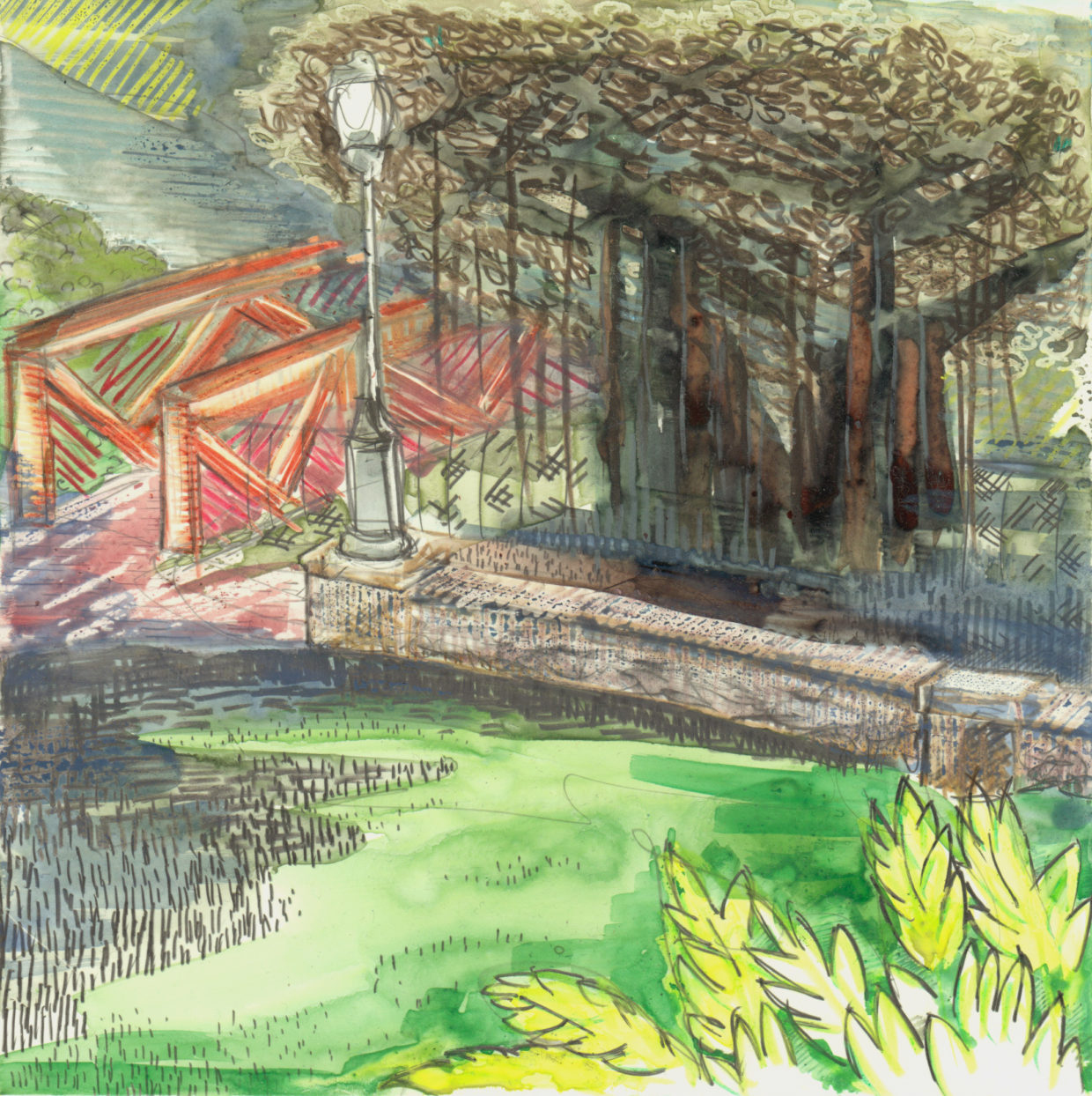This drawing is from over a month ago; my posting frequency has slowed down because the demands of my teaching have ramped up, and because I’ve been a bit sick.
As an introvert, I need a lot of time to myself–time to think quietly–to offset the amount of social demands required by my role as a college professor. I do love teaching college–I love sharing information (and having knowledge worth sharing), I love growing as a teacher, I love watching my students grow (both personally and artistically), and I love the meaningfulness and relevance of the job. But it does tire one, quite dramatically.
I’ve likened college teaching as being akin to a theatrical performance. A good professor really is on stage, but is also directing students’ attention and work flow–like a Theater Director, or like the floor manager of a restaurant. You have to be aware of content delivery, posture, articulation, context, verbiage, and you have to be responsive to the moment–are their faces blank, or are they alert? You have to track their projects, not only for grades, but to help them to avoid pitfalls and discover learning experiences.
I walked to the park to do this drawing; it was somewhat of a long, slow walk, through a part of my own neighborhood that I don’t usually walk through. There were so many locations that I would have loved to sit and draw, but plunking down on the sidewalk is a bit too conspicuous–or, at least, when I’m in introvert recharge mode, it is. Inviting conversation and questions about what I’m doing is the last thing I need at that moment!
Once at the park, seated at a picnic table, it took me a while to grasp the required composition. I mean, on the one hand, I was drawing what was really there in front of me, so that wasn’t in question–the question was concerning what to emphasize, what to crop, what to enhance, how to direct the eye through mark and color in a way that brings vitality to the depiction of what was before me.
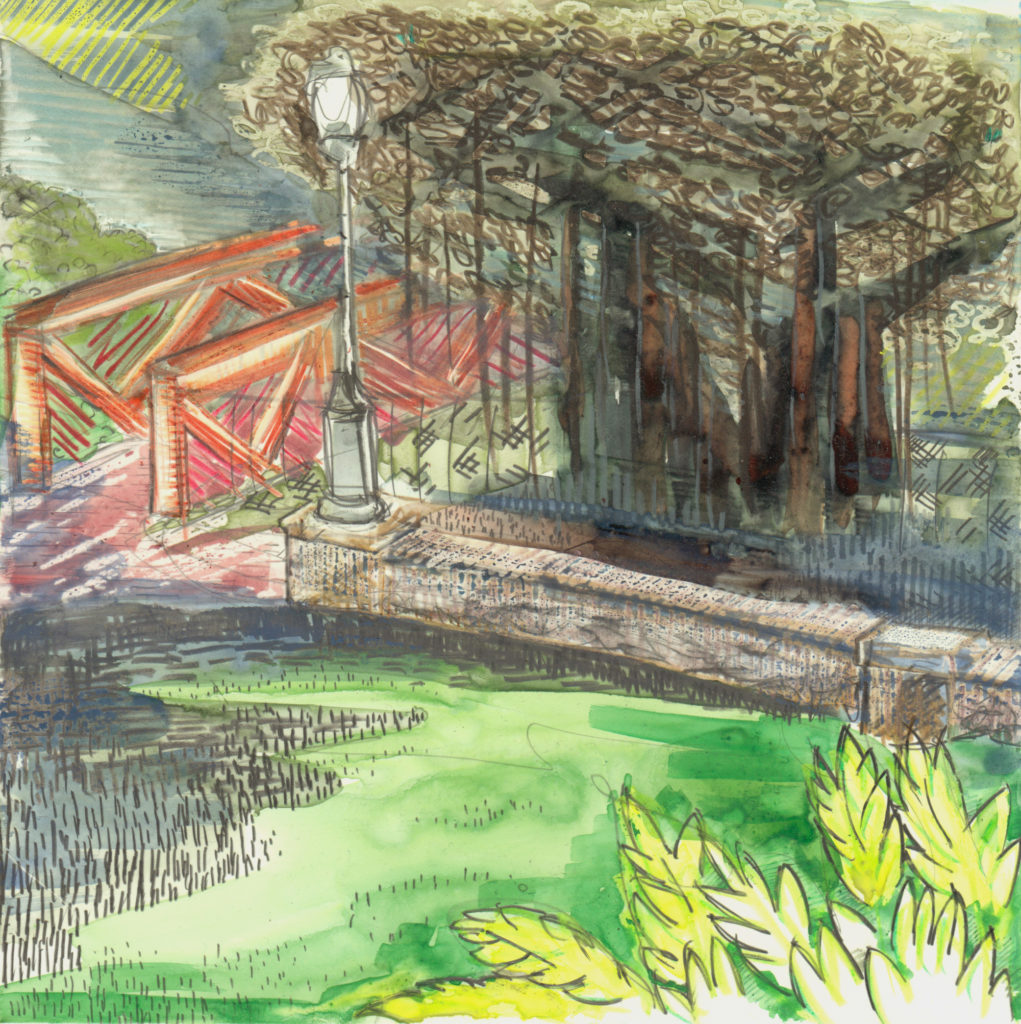
It’s similar to managing a classroom in that way–the students are the individual elements of the overall classroom experience. You have the ones you get, not the ones you hope to have or wish for, and so must shape what you’ve got for the best results for everyone, and to have a satisfying experience at the end. You work with those elements, finding their hidden strengths, rather than against them.
The flow-state of both is dynamic, and exciting. The students are obviously far more challenging, being whole people rather than visual interpretations of things in the world, of course.
In the park that day (a Saturday), a couple was sitting on a bench, sharing the viewing of something on a phone. A family group that included two pregnant women, a toddler, and a young man, were there in matching outfits to have portraits and group shots taken. Adolescents were tearing through on their bikes, calling out to each other. Various middle-aged people came through on the tail-end of some sort of run, seeming fatigued. Younger adults spent time on the park’s built-in exercise equipment, seeming very fit and energetic. People walked their dogs.
Yet you see none of this in the image. All of that activity remains in my memory, quite strongly, too. I’m depicting the place without the people–in an intentional way. It’s not that I wish they weren’t there, or that I don’t think they have an influence over place, or place over them. It’s more an interest in the marks, traces and residue. What is a place without the people who activate it?
Sometimes it’s like a stage, and in some of my older work, that’s expressly the case–I was working with the idea of landscape, scrims and staging around 2000 – 2007-ish. What memories are embedded in the land, if the land is like a stage? What beauty exists in that which we tend to consider the backdrop to action?
The image below is a work (the work is the photo, not the installation) created with Ali Prosch, of fabric constructions. There are obvious references to urns, and the ‘site’ is that of a small, nearly forgotten graveyard. A repository of memory.
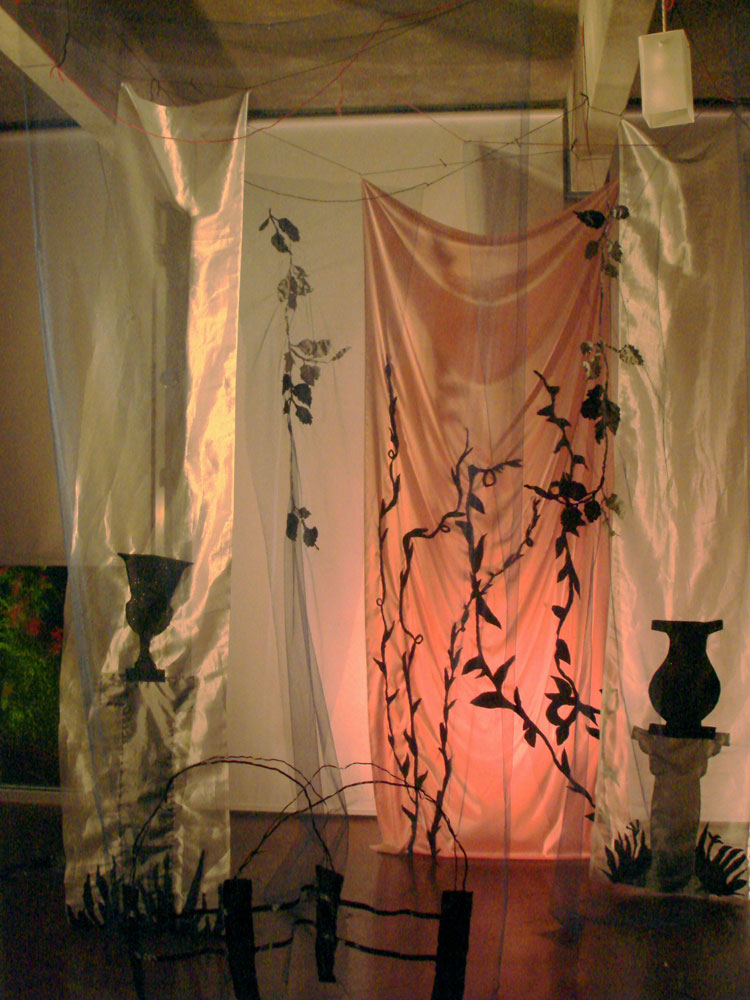
In more recent work, I’ve intentionally removed the evidence of people, the way real-estate development tears down the past (all the “tear-downs” I’ve seen eradicated over the years as Miami has been re-written and re-created), or the way the encroaching forces of climate change (people-generated) will erase the traces of us.
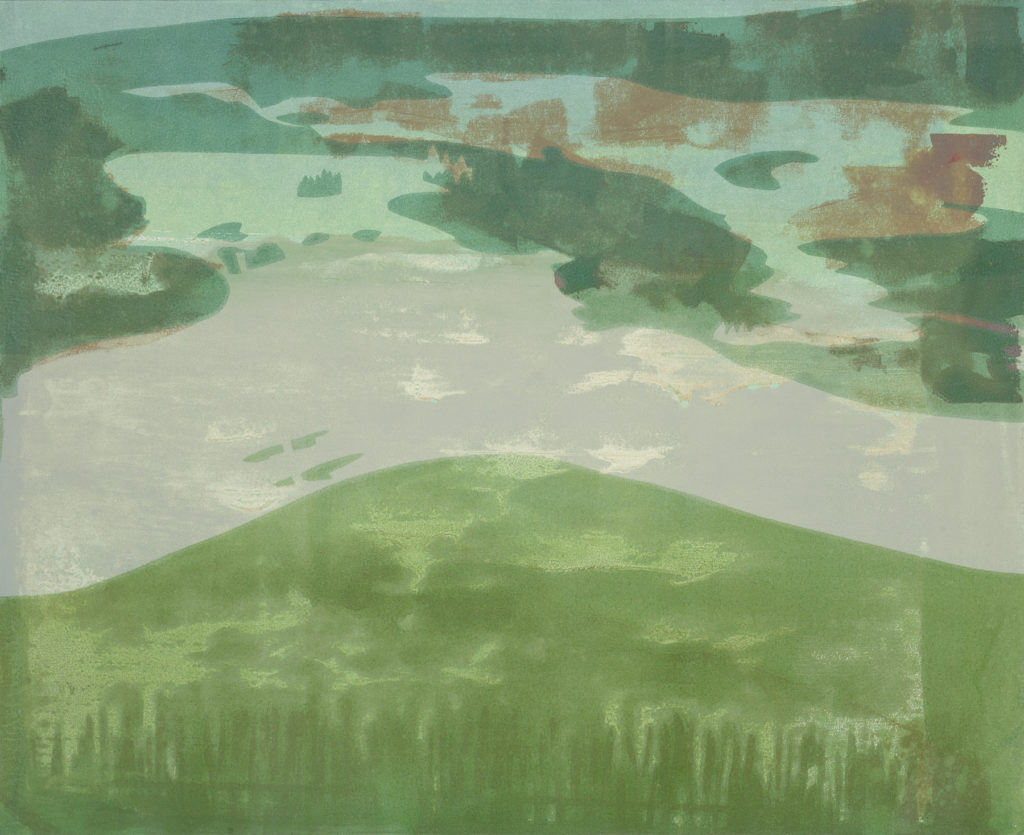
The image above is a unique print based on a historical photograph from a collection at History Miami that was taken from the Good Year’s Blimp of the Everglades. At the center should be a Seminole Indian village, but I intentionally did not depict it. That Good Year’s Blimp trip was a promotional event meant to encourage real estate development. It’s titled “Good Year’s View”, from the 2017 show Memory Lab at History Miami.
The number of problems stemming from development in the Everglades are too numerous to get into here, but it is that sort of erasure of a people in favor of the new (or new financial opportunities) that I was meaning to depict though omission.
In other older work, still, people–or their influence–is something I depict symbolically. It might have to do with introversion–people’s presence has such power and force for an introvert. Perhaps that is what I wish to depict, their presence (or their absence), rather than their specific person. The forces of culture, rather than the influence of an individual.
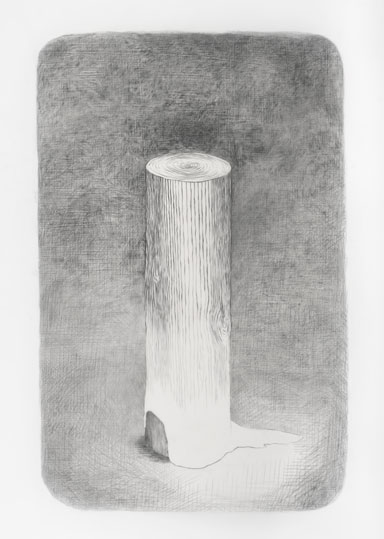
The work above is a rather large drawing on frosted mylar (the sheet is about 41″ x 29″), which I turned into some lithographs. It was part of the body of work making up my MFA Thesis exhibition, You Were Always There with Us, in 2009, and that body of work derived from an attempt to depict some of the effects of the legacy of slavery in the Caribbean and Southern US, without trying to depict black pain or exploit back bodies.
The log form came from earlier work addressing a lynching tree, and the idea that white participants would often take souvenirs away (an idea also influenced partly by some of Kerry James Marshall’s work). The tree morphed into a log, then later into planks–the change of form echoing the processing of trees into lumber and commercial goods. Echoing the embedding of the horrors of lynching into US history in ways that white culture finds invisible, or at least finds more palatable–more commercially acceptable. That’s what the ichor coating the log is–the pernicious effects of white culture on the objectified, commodified black body, coating and obscuring.
None of that is mentioned in the show’s press release, but that’s what I was trying to do with the work. My actual thesis document was decried as “too political” by the graduate director at the time, and he was ultimately forced by the department Chair to sign off on it. That likely had a role in my content subterfuge, honestly, though I did have the exhibition off-site, at BFI (at the time Bas Fisher Invitational), in order to have more freedom.
Well. Thankfully, that was a long time ago, now.
The work of mine below, a diptych of screenprints made with paper stencils, from 2004, was part of the first series I used to try to get at that idea, of the lyching tree, of family associations with it, and of the way it persists as something we historically own. I was specifically thinking of the place where my father’s side of the family is from, in Mississippi, of possible omissions from family history of certain tales, of a small church graveyard where I see both my middle and last name scattered on stones all over the graveyard. What my own legacy was, I was trying to understand, using a place that brought me a sense of peace and belonging.

And what a strange place to arrive, you might think, reaching the end of this post, from musings about the landscape of a park in Coral Gables on some Saturday in January 2020.
